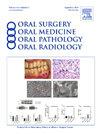The oral medicine workforce and impact on access to care in the United States
IF 2
3区 医学
Q2 DENTISTRY, ORAL SURGERY & MEDICINE
Oral Surgery Oral Medicine Oral Pathology Oral Radiology
Pub Date : 2024-08-20
DOI:10.1016/j.oooo.2024.08.010
引用次数: 0
Abstract
Objectives
The objective of this study was to characterize the current oral medicine (OM) workforce by examining the distribution of OM diplomates (OMDs) across the Unites States and to determine the need for expanding access to care.
Study Design
The OMD access was calculated based on the OMDs per 10,000 state population from the 2020 US Census data as well as their distance from state capitals and most populated cities. OMD penetrance in hospitals and cancer centers was assessed at National Cancer Care Network (NCCN) cancer centers, and Best Hospitals as reported in the 2022 US News and World Report (USNWR).
Results
OMDs are present in 64% of the states with an uneven geographic distribution. Primary workplaces included dental schools (47%), hospitals (30%), and private practices (19%). Of the OMDs in private practice, 57% limited their practice to OM. OMDs were noted at 28% of NCCN cancer centers, 30% of USNWR Best Hospitals for Cancer, and 20% of USNWR Best Hospitals.
Conclusions
There is low density and uneven distribution of OMDs with approximately one-third of the population without access to an OMD in their state, thus limiting access to care. This suggests both vast opportunities for growth and expansion of OM, as well as challenges in developing and training the necessary workforce.
美国口腔医学人才队伍及其对获得医疗服务的影响
本研究的目的是通过考察全美口腔医学文凭(OMD)的分布情况来描述目前口腔医学(OM)人才队伍的特点,并确定扩大医疗服务覆盖面的需求。根据 2020 年美国人口普查数据中每 10,000 州人口中的口腔医学文凭获得者人数,以及他们与州府和人口最稠密城市的距离,计算出口腔医学文凭获得者的分布情况。医院和癌症中心的 OMD 渗透率在美国国家癌症护理网络(NCCN)癌症中心和 2022 年《美国新闻与世界报道》(USNWR)中报道的最佳医院中进行评估。64% 的州都有 OMD,但地理分布不均衡。主要工作场所包括牙科学校(47%)、医院(30%)和私人诊所(19%)。在私人执业的 OMD 中,57% 将其执业范围限定为 OM。28% 的 NCCN 癌症中心、30% 的 USNWR 最佳癌症医院和 20% 的 USNWR 最佳医院都设有口腔内科医生。OMD 密度低且分布不均,约有三分之一的人口在本州无法获得 OMD,从而限制了获得护理的机会。这既表明口腔医学有巨大的发展和扩张机会,也表明在发展和培训必要的劳动力方面存在挑战。(口腔外科口腔医学口腔病理学口腔放射年;VOL:page range)。
本文章由计算机程序翻译,如有差异,请以英文原文为准。
求助全文
约1分钟内获得全文
求助全文
来源期刊

Oral Surgery Oral Medicine Oral Pathology Oral Radiology
DENTISTRY, ORAL SURGERY & MEDICINE-
CiteScore
3.80
自引率
6.90%
发文量
1217
审稿时长
2-4 weeks
期刊介绍:
Oral Surgery, Oral Medicine, Oral Pathology and Oral Radiology is required reading for anyone in the fields of oral surgery, oral medicine, oral pathology, oral radiology or advanced general practice dentistry. It is the only major dental journal that provides a practical and complete overview of the medical and surgical techniques of dental practice in four areas. Topics covered include such current issues as dental implants, treatment of HIV-infected patients, and evaluation and treatment of TMJ disorders. The official publication for nine societies, the Journal is recommended for initial purchase in the Brandon Hill study, Selected List of Books and Journals for the Small Medical Library.
 求助内容:
求助内容: 应助结果提醒方式:
应助结果提醒方式:


